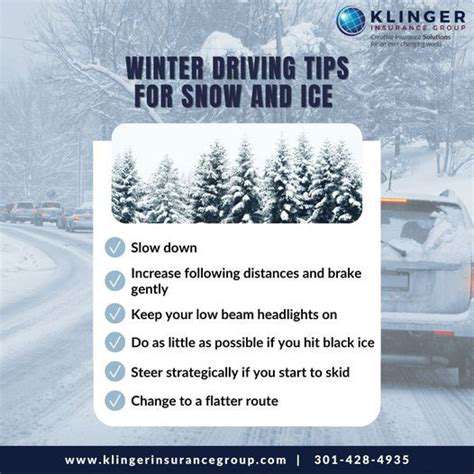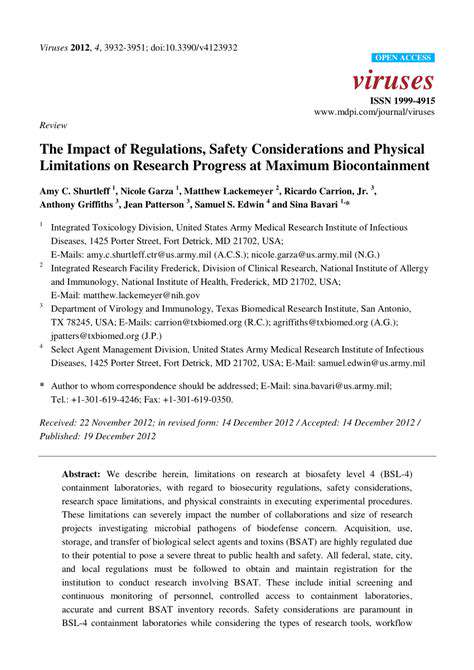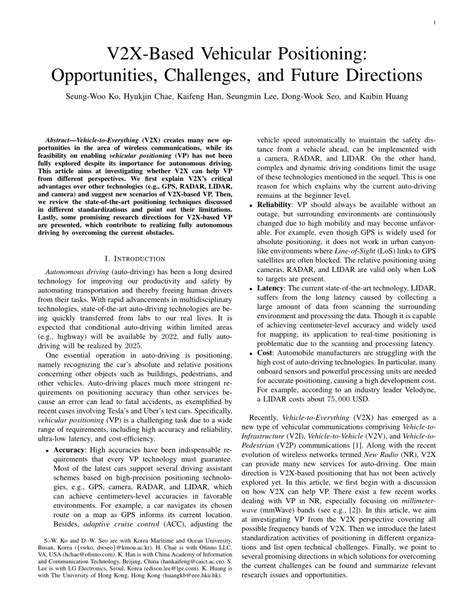Understanding the Dangers of Ice-Covered Roads
Driving on ice-covered roads presents a significant safety hazard, drastically reducing traction and increasing the risk of accidents. The reduced friction between tires and the road surface makes steering, braking, and accelerating significantly more difficult, potentially leading to loss of control. The unpredictable nature of ice, with its varying thickness and hidden patches, further complicates the situation, making it crucial to assess the conditions thoroughly before embarking on any journey.
Knowing the potential dangers associated with ice is the first step toward driving safely. This awareness allows drivers to adapt their driving style and make informed decisions about whether or not it's safe to proceed. Driving on ice requires a heightened level of caution and a conscious effort to maintain control, as even a seemingly minor incident can escalate into a serious accident.
Evaluating Road Conditions: Visual Clues
Before you start your journey, it's essential to assess the road conditions by looking for visual clues. Look for signs of ice, such as a glossy or glassy appearance on the pavement, or frost forming on bridges and overpasses. Observe the road's color. Dark pavement can absorb more heat, potentially melting ice, while lighter colored surfaces may remain icy longer. Pay attention to other vehicles on the road; if they are driving cautiously or slowly, it might be a sign of hazardous conditions.
Considering Temperature and Time of Day
Temperature plays a critical role in determining ice formation. Freezing temperatures, especially overnight or in areas with lower temperatures, increase the likelihood of ice buildup on roads. The time of day can also significantly impact the road's icy condition. Early mornings and late evenings are often when ice is most prevalent, as temperatures are consistently lower. By understanding the correlation between temperature and time of day, drivers can anticipate potential hazards and adjust their driving accordingly.
Checking Weather Forecasts and Reports
Staying informed about the weather forecast is paramount. Utilize reliable weather apps or online resources to gain an understanding of current and upcoming weather conditions. Look specifically for freezing temperatures, precipitation, and the possibility of ice forming on roads. Information about road conditions, such as ice reports or warnings, can be vital in determining the safety of your journey. Staying informed about the weather significantly reduces the chance of surprises on the road.
Assessing Visibility and Precipitation
Visibility is another crucial factor to consider when assessing road conditions. Heavy snowfall or rain can drastically reduce visibility, making it difficult to see potential hazards such as ice patches or other vehicles. If precipitation is expected or occurring, it's essential to reduce speed and increase following distance to allow for safer maneuvering.
Utilizing Resources for Real-Time Information
Leveraging real-time road condition reports can significantly enhance your safety. Many transportation agencies and news outlets provide updates on road conditions, including reports of ice patches and closures. Utilizing these resources can help you make informed decisions about your travel plans and adjust your route to avoid potentially hazardous areas. These resources are invaluable for navigating icy conditions and ensuring a safer journey.
Preparing Your Vehicle for Winter Driving: Essential Gear

Checking Your Tires
Proper tire inflation is crucial for safe winter driving. Under-inflated tires can significantly reduce traction and braking performance, making it harder to maintain control on icy or snowy roads. Ensure your tires are inflated to the recommended pressure, which is typically found on a sticker in your driver's side doorjamb or in your owner's manual. Winter tires, if available, can dramatically increase grip on slippery surfaces.
Inspect your tires for wear and tear. Look for uneven wear patterns, cuts, or bulges. Damaged tires can compromise your vehicle's stability and safety, especially in challenging winter conditions. If you notice any issues, get them repaired or replaced promptly.
Maintaining Your Fluids
Winter weather can affect the performance of your vehicle's fluids. Ensure your engine coolant is properly mixed with antifreeze to prevent freezing. A properly functioning coolant system is vital for your engine's health and optimal performance during cold weather. Check the levels of engine oil, transmission fluid, and brake fluid to ensure they are adequate and not contaminated. Low fluid levels can lead to serious mechanical issues.
Replacing your windshield washer fluid with a winter-specific formula is important. Winter-specific fluids are specifically designed to prevent freezing in frigid temperatures. This simple step can save you from dealing with a frozen windshield on a cold morning.
Battery Health and Charging System
Cold weather can significantly impact your vehicle's battery performance. A weakened battery can struggle to start your vehicle in frigid temperatures. Test your battery's charge and condition. If necessary, have it tested by a professional to ensure it is functioning optimally.
Check your alternator, which is responsible for charging the battery. A failing alternator can lead to a discharged battery and difficulties starting your vehicle. Regular maintenance of your charging system is key to preventing unexpected battery issues during the winter months.
Winter Driving Essentials
Pack a winter emergency kit in your vehicle, including blankets, warm clothing, a first-aid kit, a flashlight with extra batteries, and non-perishable food items. This kit can be invaluable if you experience a breakdown or get stranded in inclement weather. Preparing for potential emergencies is essential for maintaining safety and comfort during winter driving.
Consider purchasing winter-specific driving accessories like snow chains or tire traction devices. These accessories can significantly improve your vehicle's traction and stability on slippery roads, reducing the risk of accidents.
Preparing Your Vehicle's Interior
Make sure your vehicle's interior is well-maintained for winter driving. Ensure the windows are properly cleaned and defrosted. Proper visibility is crucial for safe driving in winter conditions. Remove any unnecessary items from the interior that could obstruct your view or create a hazard. Keeping your vehicle clean and organized can reduce stress and increase your safety on the road.
Consider installing a car seat cover to protect your interior from snow, ice, and dirt. Protecting your vehicle's interior will help maintain its value and condition over time. Winter weather can wreak havoc on a vehicle's interior, and preventive measures can save you money and frustration.
Driving Techniques for Icy Roads: Mastering the Controls
Assessing the Conditions
Before you even consider starting your vehicle, it's crucial to thoroughly assess the road conditions. Look for signs of ice, such as black ice, which is often transparent and difficult to spot. Be mindful of areas with shaded patches, bridges, and overpasses, as these are common locations where ice forms. Observing other drivers' behavior can also provide valuable clues about the road's grip and the level of hazard. If you're unsure, it's always best to postpone your trip until conditions improve. A little patience can prevent a serious accident.
Gentle Acceleration and Braking
On icy roads, aggressive acceleration and braking are your worst enemies. Instead, accelerate gradually and smoothly, allowing the tires to maintain contact with the road surface. Avoid sudden movements, as they can easily lead to loss of control. When braking, apply the brakes gently and steadily, avoiding harsh stops. If you feel the vehicle starting to skid, release the brakes and gently steer in the direction you want the vehicle to go.
Using engine braking is another effective technique. Reducing your engine speed smoothly can help control the vehicle's momentum and maintain traction, especially on steep hills.
Steering Control and Maintaining Traction
Maintaining control over the steering wheel is paramount when driving on ice. Avoid sharp turns and maintain a slower speed than you would on dry roads. If you find yourself losing traction, ease off the accelerator and steer in the direction you want the vehicle to move. Don't oversteer, as this can further destabilize the vehicle. Steering gently and gradually is key.
Proper Tire Pressure and Traction
Ensuring your tires have the proper inflation pressure is essential. Under-inflated tires significantly reduce traction on icy surfaces. Check your owner's manual for the recommended tire pressure for your vehicle. If you're unsure about the current condition of your tires or the amount of tread, it's prudent to have them inspected by a professional. Proper tire maintenance plays a vital role in maintaining control on icy roads.
Utilizing Traction Aids (if available)
Many vehicles are equipped with traction control systems that can help prevent skids on icy roads. Familiarize yourself with these systems and how they work. If you notice your vehicle starting to lose traction, engage the traction control system if available and then gently guide the vehicle in the direction you want it to go. Remember to be patient and attentive while driving on icy roads, as sudden movements can easily lead to loss of control. If you're not comfortable with the vehicle's traction control, it's better to postpone your trip.
Emergency Procedures for Skidding
Despite your best efforts, you might encounter a skid. Remain calm and avoid panicking. If you start to skid, gradually release the accelerator and steer in the direction you want the vehicle to move. Avoid slamming on the brakes or making sudden steering corrections. These actions can worsen the skid. If possible, try to maintain a straight path and gradually regain control. Be aware of your surroundings and the potential for collisions, and take steps to mitigate any potential risks.
Adapting Your Driving Style for Winter Conditions: Maintaining Focus
Understanding the Challenges of Winter Driving
Winter driving presents unique challenges that require a significant shift in your driving style. Ice and snow dramatically reduce traction, increasing the risk of skidding and loss of control. Understanding these factors is paramount to navigating winter roads safely. This includes recognizing the altered stopping distances and the increased potential for sudden changes in road conditions.
The reduced visibility from snow and ice, coupled with potential glare from the sun reflecting off the snow-covered surfaces, can impair your ability to see hazards and react effectively. Maintaining a heightened awareness of the road and your surroundings is essential for mitigating these risks.
Adjusting Your Speed and Following Distance
Speed is a critical factor in winter driving. Lower speeds allow for quicker responses to changing road conditions and provide more time to react to potential hazards. Reduce your speed significantly when driving on ice or snow-covered roads, and maintain a substantially larger following distance than you would in normal driving conditions.
This increased following distance allows you more time to react to sudden stops or changes in direction by the vehicle ahead. Remember, stopping distances on ice and snow are considerably longer than on dry pavement.
Mastering Braking and Steering Techniques
Braking is a crucial aspect of winter driving. Harsh braking on ice can lead to skidding. Instead of applying the brakes firmly, apply them gently and steadily. This allows the vehicle to maintain control and reduce the likelihood of losing traction.
Steering techniques also need adjustment. Avoid sudden turns or quick lane changes. Steer smoothly and gradually to maintain control, especially when encountering ice patches or snow-covered areas. Steer into a skid, not against it. Learning these techniques can greatly reduce the risk of accidents.
Proper Tire Selection and Maintenance
Using winter tires is highly recommended for safe winter driving. These tires have a specific tread design and rubber compound that provide superior grip on icy and snowy surfaces. They are designed to maximize traction and control in adverse weather conditions. Using appropriate tires is an important preventative measure.
Utilizing Vehicle Technology and Safety Features
Modern vehicles are equipped with advanced safety features that can assist in winter driving. These features include traction control systems, anti-lock brakes (ABS), and electronic stability control (ESC). Understanding how these systems work and how to use them effectively can significantly enhance your safety.
Familiarize yourself with the warning lights and indicators on your dashboard, as they can provide crucial information about the vehicle's condition and the presence of potential issues. Using these technologies is a critical element to a safe winter driving experience.
Recognizing and Avoiding Hazardous Conditions
Winter driving safety hinges on anticipating and recognizing hazardous driving conditions. Look for areas where ice is likely to form, such as bridges, overpasses, and shaded areas. Be mindful of changing weather patterns and adjust your driving accordingly. Observe the conditions of the road and the vehicles around you to avoid potentially dangerous situations.
Pay close attention to weather forecasts and road conditions reports. Understanding the predicted conditions will allow you to plan your route and adjust your driving accordingly. This proactive approach is essential for minimizing risks and promoting safe winter travel.
Winter Driving Safety Tips: Beyond the Basics

Winter Driving Conditions
Winter driving presents unique challenges, demanding a heightened awareness of the road conditions and a more cautious approach than during warmer months. Accidents are more likely in winter due to reduced visibility, slick roads, and decreased traction. Understanding these conditions is the first step towards safe winter driving.
Ice and snow significantly reduce the friction between tires and the road surface, leading to loss of control and potential skidding. This decreased traction is a critical factor to consider when adjusting your driving habits for winter conditions.
Vehicle Preparation
Proper vehicle preparation is essential for safe winter driving. Ensure that your tires are equipped with winter tires or have sufficient tread depth for optimal grip on icy surfaces. A well-maintained vehicle with adequate winter supplies is vital for navigating challenging conditions.
Check your battery and fluids, including antifreeze, brake fluid, and power steering fluid. A properly functioning vehicle can significantly improve your safety during winter driving.
Clear all snow and ice from your vehicle, including the roof, windows, and headlights. This is crucial for maintaining clear visibility and preventing potential hazards for yourself and other drivers. A clean vehicle is a safer vehicle.
Driving Techniques
Adjust your driving techniques to suit the winter conditions. Maintain a safe following distance, allowing for increased stopping distances on icy roads. Slow down significantly to accommodate the reduced traction and visibility.
Avoid sudden braking or acceleration, as these actions can lead to loss of control. Gentle steering inputs are key to maintaining stability on slippery roads. Anticipate potential hazards and adjust your driving accordingly.
Visibility and Awareness
Winter weather often brings reduced visibility due to snow, ice, and fog. Be prepared for these conditions by adjusting your driving behavior. Prioritize visibility by using your headlights even during daylight hours.
Maintain a heightened awareness of your surroundings, including other vehicles, pedestrians, and potential hazards like black ice. Be mindful of changing conditions and be ready to react appropriately.
Emergency Preparedness
Winter driving can sometimes lead to unexpected situations. Having a winter emergency kit is crucial. The kit should include items like blankets, non-perishable food, water, a first-aid kit, and a flashlight. Prepare for the possibility of getting stranded by being adequately equipped.
Knowing how to use your vehicle's safety features, such as the hazard lights and emergency braking, is also important. Having a clear understanding of your vehicle's capabilities will help you react effectively in any situation.











